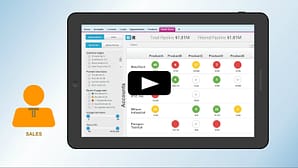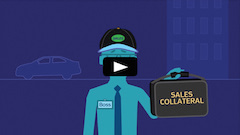How messaging and branding hurt your business
Let’s assume that you work for a technology company with a viable brand and a professional marketing operation. Which of the following does more to make your brand central to the business lives of your customers:
- Advertising, corporate identity, and PR? Or
- Everything else employees do?
Sure, branding is important. In an era of increasing information overload, maybe more important than ever.
However, as Jens Martin Skibsted and Rasmus Bech argue in a Harvard Business Review article, the most successful digital brands (e.g., Apple, Google) do comparatively little brand image advertising. How we feel about these companies’ brands depends almost entirely on how we feel about their products. Apple’s advertising by product placement is certainly pervasive — which underscores the authors’ observation that Apple’s advertising is basically “boring product shots” anyway.
Skibsted and Bech conclude
Brand builders must embed themselves across the customer value chain. As information is more and more available and the importance of brands increases, the ability to tell a meaningful story through actions and products, not words, is the only way to win.
Opportunity costs
Marketers embedded “across the value chain” is not something I’ve seen in many companies. What I do see too often is marketers more interested in controlling the message than in enabling sales to increase customer engagement. I’ve seen video projects delayed for six months to a year while marketers debated messaging and tweaked graphics standards.
Here’s why that’s bad for business
- During such delays, sales is not supported by content they could use to help produce revenue
- During such delays, marketing is deprived of content they could use to opportunities by increasing the effectiveness of email campaigns
- During such delays, salespeople lose opportunities to cross-sell and up-sell products outside their own portfolios
- The longer the delay, the more likely the market, the customer, or the solution is to change — a lot.
Now, we’re not talking about videos that are supposed to wow zillions of blasé SuperBowl viewers. We’re talking about reaching out to customers and prospects — many of whom doubtless know your brand and what you do. Isn’t any video a marketer can produce that helps the business engage more effectively with more customers better than producing nothing for months at a time? Especially condering how easy it is to edit and update video?
The commoditization of technology solution benefits
A lot of uncertainty about messaging can be eliminated by dispensing with high-level messaging altogether. Most of it is about benefits — which, expressed succinctly, are pretty much interchangeable among technology solution providers. Every system integration improves customer experience. Every instance of automation reduces manual errors. All cloud computing solutions lower infrastructure costs. Every mobility solution boosts employee productivity. Buyers hear this stuff all day. They are exposed to branding and messaging from other solution providers all day, too.
So, what you need to do is make a video about something buyers don’t hear all day. Brocade recently introduced a network switch that speeds up data transfer to Disaster Recovery sites. It’s not a ho-hum product — but DR isn’t a topic that generates a lot of buzz, either.
 Early drafts of the product introduction video started out with high-level messaging around the importance of data protection and how data loss causes brand damage and many other bad things to happen. But discussions among marketers, sales, product engineering and other subject matter experts quickly led to the realization that anyone who could ever influence the decision as to whether to buy this switch or not has to know why Disaster Recovery is important!
Early drafts of the product introduction video started out with high-level messaging around the importance of data protection and how data loss causes brand damage and many other bad things to happen. But discussions among marketers, sales, product engineering and other subject matter experts quickly led to the realization that anyone who could ever influence the decision as to whether to buy this switch or not has to know why Disaster Recovery is important!
This insight sounds obvious, but you’d be surprised how often product “messaging” fails to take into account questions like “what’s in the buyer’s job description?” In this case, we were able to quickly identify a more technical approach that got right to the point : how latency can prevent meeting recovery objectives, and the peace of mind you get with better troubleshooting tools. For both, we were able to find specific examples which everyone agreed were compelling proof points. Once those became the focus, producing the video (and shorter edited versions for various channels and uses) took only a couple of weeks.
Persona-based videos
 Another way to get more videos into the hands of the people who use them to increase sales engagement is to make very short videos to address different personas. This 30-second video, for example, created for sales engagement specialists Journey Sales, focuses only on analytics features of their SalesForce CRM app that are of interest to sales managers.
Another way to get more videos into the hands of the people who use them to increase sales engagement is to make very short videos to address different personas. This 30-second video, for example, created for sales engagement specialists Journey Sales, focuses only on analytics features of their SalesForce CRM app that are of interest to sales managers.
You can also address different markets with videos that re-use some of the same elements.
AVG SMB solutions include remote monitoring and management services for the IT departments of SMBs, and managed services providers (MSPs), to whom these services can be outsourced. So, these two videos are similar — but quite different.
For more on multiple short videos that get done faster, check out our Buyer’s Journey Video Bundles.






